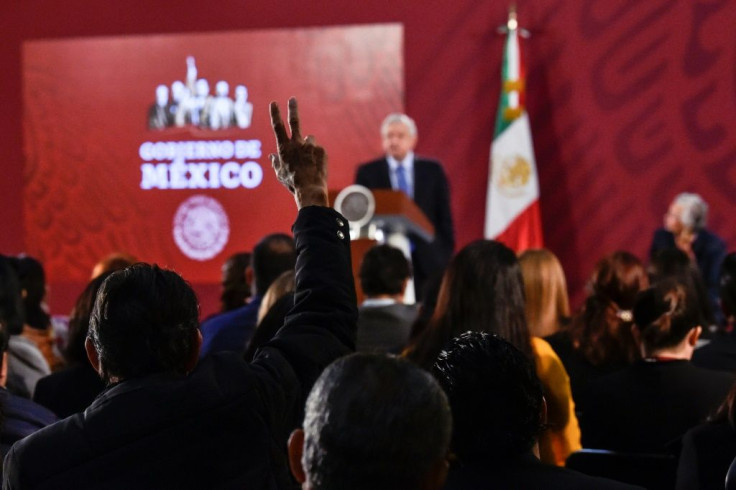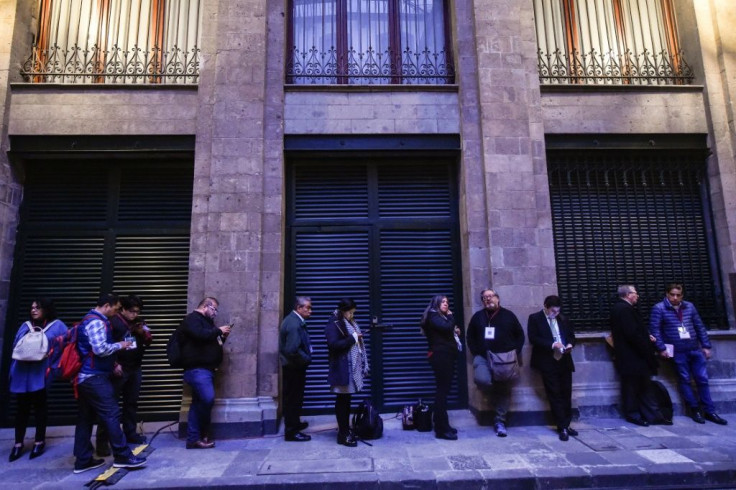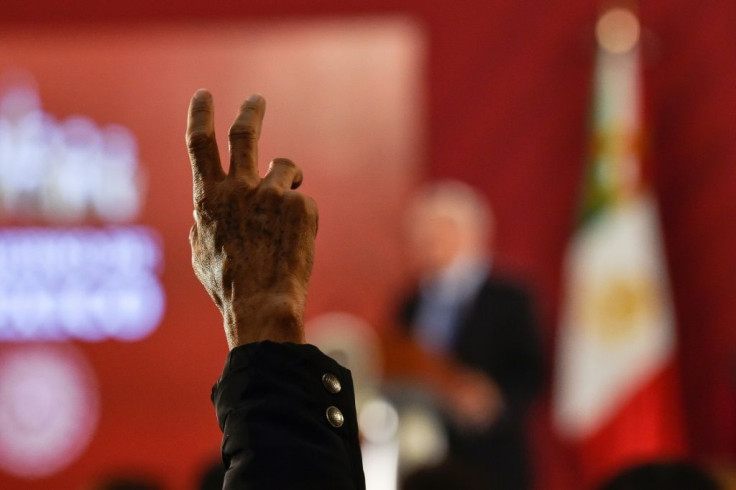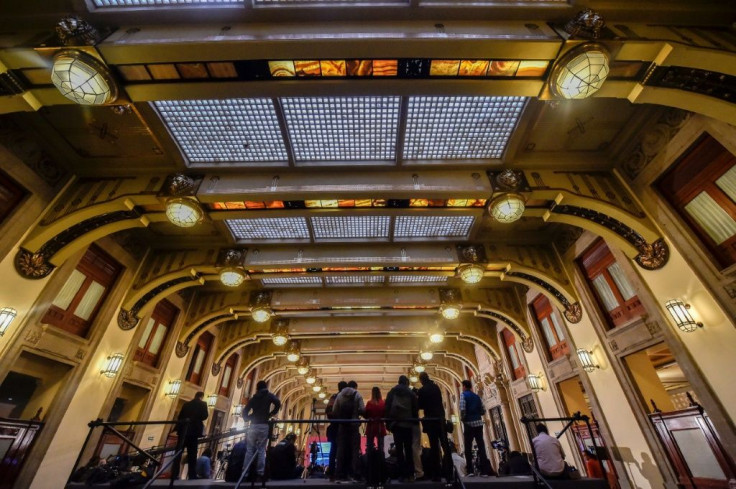AMLO's Daily Conference An Endurance Test For President, Press Alike

Every weekday at 7:00 am, Mexican President Andres Manuel Lopez Obrador stands before a microphone and talks -- and talks, and talks -- directly to "the people" as the journalists covering his daily news conference battle to stay awake.
This is the "mananera," or morning press conference, an exercise in political communication unlike anything else in the world.
Falling somewhere between religious sermon and stump speech, the press conference has become a fixture in Mexico since the anti-establishment leftist known as AMLO took office a year ago, on December 1, 2018.
"Donald Trump has Twitter. In Brazil, Jair Bolsonaro prefers Facebook. In Venezuela, Hugo Chavez and his successor, Nicolas Maduro, have the radio. For AMLO, it's the 'mananera,'" said political scientist Luis Estrada.
"Yet even though this peculiar form of press conference is unique in the world, it has so far been imitated nowhere," he added sarcastically.
Journalists begin lining up for Lopez Obrador's press conference at 5:30 am outside the National Palace, on Mexico City's central square.
Their eyes barely open, bracing against the cold, the gaggle of political reporters, foreign correspondents, bloggers, photographers and camera operators obediently line up, then file into the stone palace's courtyard.

An hour later, after a perfunctory security check, they are granted access to the immense press room. But surprise: it is even colder there.

At 7:00, a female soldier barks a salute to the arriving head of state: "Buenos dias, Senor Presidente."
Lopez Obrador, 66, flows into the room in a gray suit one size too big and installs himself at the lectern.
His silvery hair is neatly combed, his eyes glow. But he looks tired. Twelve months of pre-dawn work days -- he already held his daily meeting with his security staff at 6:00 am -- are taking their toll.
He does not even take a break for public holidays.

If he keeps up this schedule, he will have held around 1,500 morning press conferences by the end of his six-year term.
"Animo!" he tells the 100 or so journalists, which roughly translates as "Chin up!"
It is needed encouragement: the conference can last up to two and a half hours.

The "mananera" -- which comes from a word meaning "morning sex" -- is a revolution in a country where presidents have rarely taken questions from the press.
Lopez Obrador first began the practice as Mexico City mayor (2000-2006).
As president, he has used it as a platform to announce policy, speak to his base and attack opponents both real and perceived, sometimes including the news media themselves.
"Over time, it has become more about political propaganda than accountability," Estrada told AFP. "It sounds like a sermon. It has taken on a moralizing tone."
AMLO, a self-described Christian, "wants us to adopt his moral code," he said.
Lopez Obrador fields a mix of softball questions from sympathetic fringe media and real ones from the mainstream press -- which he largely evades in his meandering answers.
Communications consultant Daniela Sanchez Herrera says the style is classic left-wing populism.
"He casts his 'adversaries' as 'conservatives.' He uses 'the people' in the abstract -- 'the people' are good, 'the people' are wise,'" she wrote in the latest issue of Foreign Affairs magazine's Spanish edition.
It has become a daily ritual for fact-checkers, too.
One website, SPIN Political Communication Workshop, keeps a running tally of Lopez Obrador's misleading claims, just as The Washington Post does for Trump.
According to its count, AMLO has made 13,600 "deceptive statements" in one year.
That outpaces Trump, who is at 13,500 after nearly three years in office.
The journalists in the soaring press room are largely resigned to their fate: posing questions the president will mostly just dodge.
But there are occasional exceptions. Last April, journalist Jorge Ramos of US Spanish-language broadcaster Univision climbed up on the dais with the president to debate homicide statistics with him face to face.
Ramos insisted Lopez Obrador was misleading people when he said murders were on the decline, waving the government's own figures at him.
"I have other information," Lopez Obrador replied.
© Copyright AFP {{Year}}. All rights reserved.





















